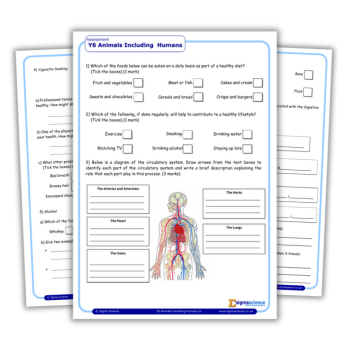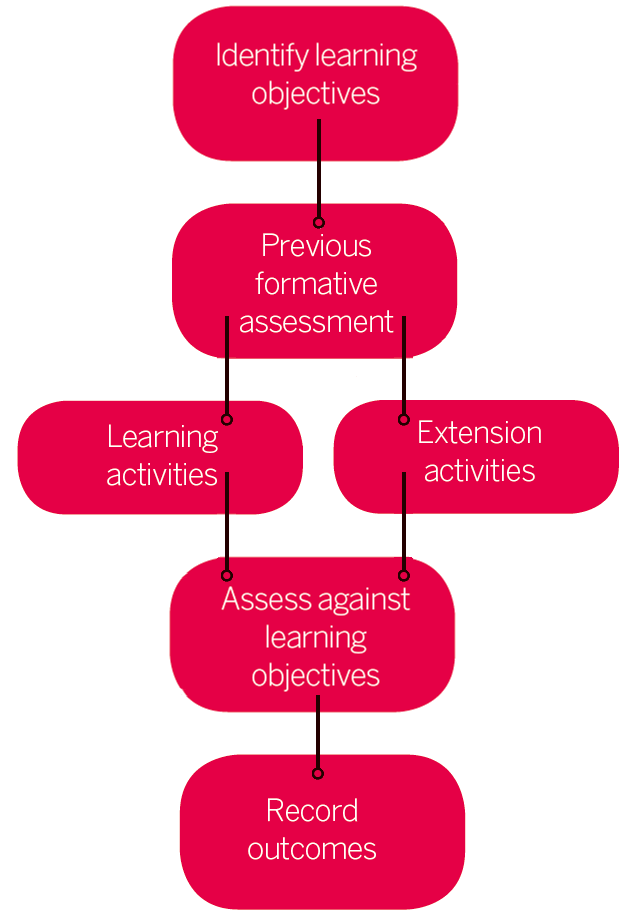Formal assessment – Make yours efficient and meaningful for the new Education Inspection Framework

Deliver a mastery curriculum built on solid foundations and make formative assessment efficient and meaningful, says Stephan Nicholls…

I’m sure that up and down the country there were sighs of relief as the new Education Inspection Framework (EIF) confirmed what every practitioner already knew – what’s important is knowing where your pupils are and where they need to go next; data drops provide an essential high-level overview of attainment and progress but need to be used for quantifiable impact.
Effective formative assessment needs to take as little time as possible, but still be meaningful. It is also useful to remember that we are delivering a mastery curriculum – making sure we always build on secure foundations, favouring extension over acceleration.
Some basic principles will help you with this, starting with a model for teaching in a mastery curriculum:

The idea is, having identified the desired learning outcomes, to know where the pupils are against those outcomes, either by referring back to previous formative assessment or maybe by administering a short, focused test.
Pupils can then be grouped as appropriate for learning and extension activities, followed by assessment against what was taught to record the final outcomes.
Now we can explore each of those steps in more detail.
Identifying learning objectives
This can be done in a number of ways, planning and scheme of work documents being obvious starting points. If previous formative assessments are available, then a gap analysis will also identify learning objectives or indicate the next step.
Any reasonable electronic assessment system should be able to run a gap analysis for you, but previous planning documents or assessment sheets may also identify where pupils are and help you identify the next step.
Previous formative assessment
This can be used to help group pupils based on what they already know. The key here is that, however pupils’ attainment is recorded, it should be used, as Ofsted say, to “helps pupils to embed knowledge and use it fluently, and assist teachers in producing clear next steps for pupils”.
If such assessment is not available, it may be appropriate to determine pupils’ knowledge and skills through such techniques as class discussion, self or peer assessment or a short test.
The end point is being able to group pupils based on their ‘depth’ of learning against the identified objectives. One possible grouping would be:
- Not begun: The pupil cannot demonstrate any of the knowledge or skills you are aiming for
- Working towards: The pupil has begun to demonstrate the learning, but it is ‘shallow’ and may not be recalled without reminders, not everything which needs to be learnt has been yet.
- Achieved: The pupil can demonstrate the required learning, but only in the context in which it was taught and similar and familiar contexts
- Mastered: The pupil can apply his or her learning in new contexts
Used in a table, it might look like this:

This grouping will help identify which learning and/or extension activities are required.
Learning and extension activities
You know what the learning objectives are and have grouped your pupils based on their prior knowledge and skills. Facilitating pupils’ learning is at the core of what teachers do, but it’s worth just expanding on the purpose of extension activities.
The point of an extension or enrichment activity is not to expect extra work from your pupils who have already got it but to give more challenge. Such activities:
- avoid boredom, as pupils are not doing repetitive work;
- stretch pupils without adding work; and
- allow pupils to apply their knowledge.
Assess against learning objectives
There are a variety of ways to assess achievement against the desired outcomes. Most important is our professional judgement, but alongside that might be peer or self-assessment or a short, focused test.
What form the judgement takes is up to you, but generally it will around the ‘depth’ of the pupil’s understanding – for instance, using the simple model of learning described above.
Record outcomes
Of course, outcomes can be recorded manually; the two main forms will be either through individual pupil records or on a planning document or class record sheet, generally just noting pupils who have performed above or below expectations.
The problem with manual recording (beyond getting the right combination of coloured highlighters, dates, and so on) is the ease with which outcomes can then be analysed and used as described above. Electronic systems can overcome these issues saving time and effort.
Three I test
So a formative assessment strategy will prepare you for Ofsted’s ‘three I’ judgements:
- Intent: The curriculum sets out the knowledge and skills that pupils will gain at each stage.
- Implementation: How the curriculum is taught and assessed in order to support pupils to build their knowledge and to apply that knowledge as skills.
- Impact: The outcomes that pupils achieve as a result of the education they have received.
… but more importantly will help ensure the best outcomes for your pupils.
Finally, bear in mind that all the data in the world doesn’t beat what actually happens in the classroom, as Amanda Spielman said when launching the new Ofsted inspection framework, when you tell inspectors that your internal data and information helps you to know about progress and attainment, inspectors’ reaction should be: “That’s great, let’s go and see it in action.”
Stephan Nicholls has worked in education for over 30 years including as a headteacher. He is now an education adviser, mainly for Target Tracker, but also as computing subject lead and a key stage moderator.











